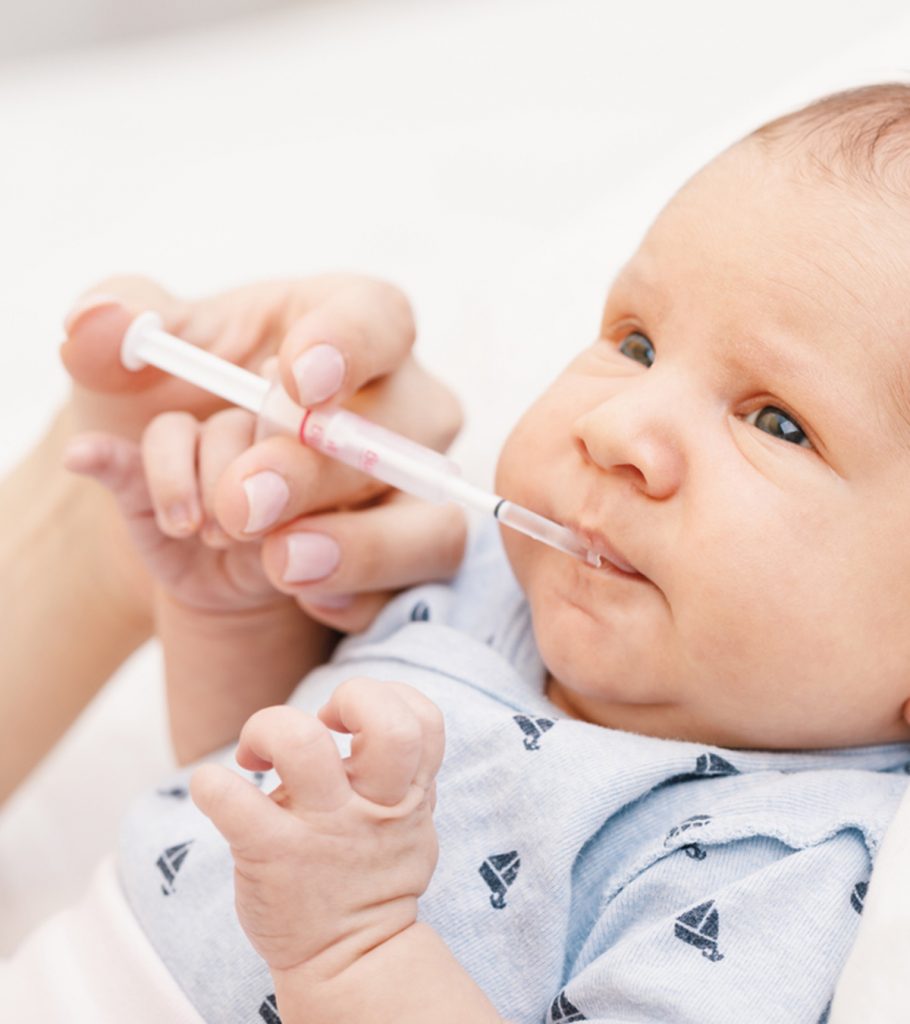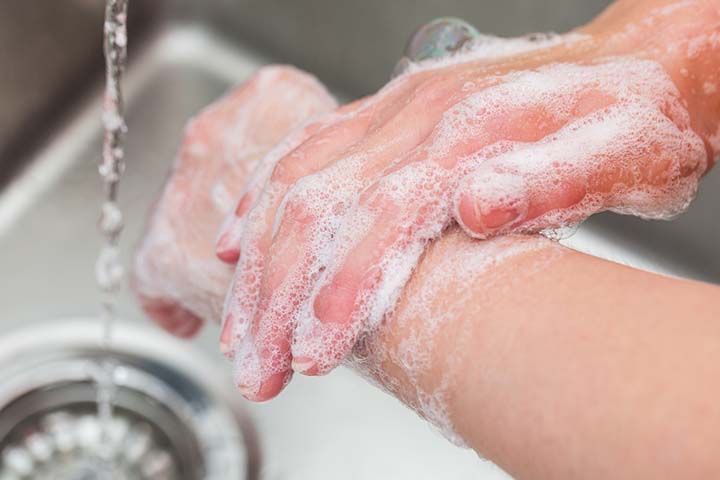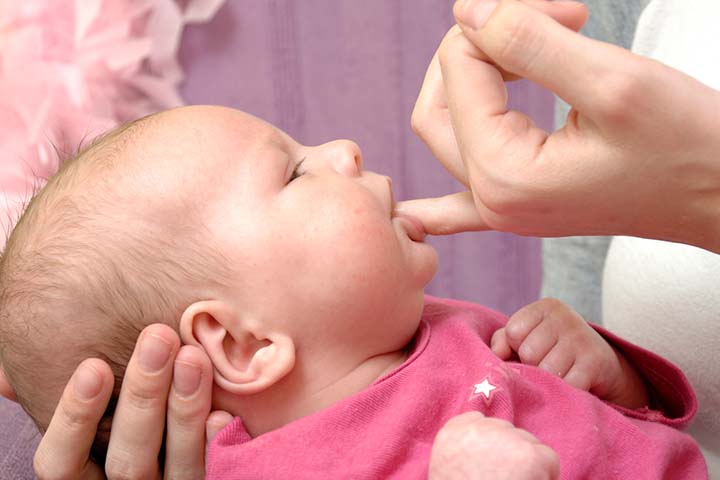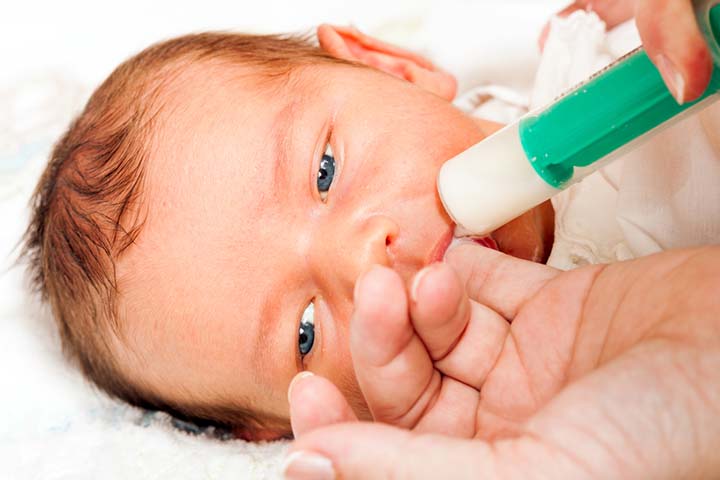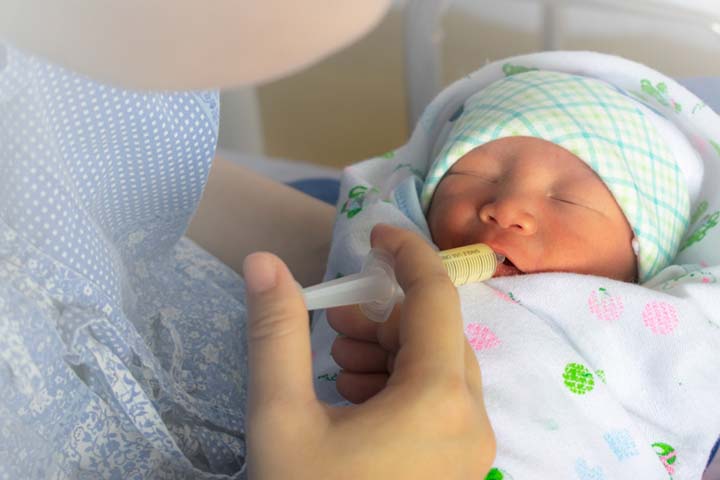Feeding a baby with a syringe is an inevitable choice when a baby can’t nurse from the breast. Generally, babies are born with an innate ability to suckle and consume breast milk. However, there may be various reasons why a baby can’t do it. In such instances, feeding a baby with a syringe can help them consume breast milk. Breast milk is vital for babies as it provides them with essential nourishment and hydration.
Breast milk is vital for babies as it helps them stay nourished and hydrated. Besides, it provides them antibodiesiXDefensive proteins of the immune system that protect the body from the harmful effects of foreign invadersthat help against illnesses (1). Hence, syringe feeding is recommended until the baby starts breastfeeding naturally.
Read this post to know about syringe feeding, when it is needed, steps to feed your baby with a syringe, and precautions to observe.
What Is Syringe Feeding?
Syringe feeding allows the baby to consume the mother’s milk through specialized infant feeding syringes. The breast milk is expressed into a sterile vessel and drawn into a feeding syringe. The technique is quite commonly used to feed colostrumiXThe first milk produced immediately after childbirth, which is rich in immunity-providing elements, which is very low in volume, to newborns unable to breastfeed.
During syringe feeding, the tip of the syringe is placed on the side of the baby’s mouth to enable feeding. Some syringes have an attached fine feeding tube, which can be inserted into the baby’s mouth. The type of syringe used may vary depending on several factors, including the doctor’s recommendation, your baby’s health, and reasons behind the baby’s inability to breastfeed.
When Is Syringe Feeding Done?
Syringe feeding is practiced when breastfeeding is not possible because the baby cannot suckle or the mother cannot breastfeed. Elizabeth Cauvel, a mother, shares how her newborn did not latch which is why she had to choose syringe-feeding, “My baby simply declined the breast. Despite the L&D nurses’ repeated attempts, my son could not or would not latch. I hand-expressed drops of egg yolk-colored colostrum into a syringe so we could feed him (i).” Below are certain scenarios where syringe feeding may be considered (2).
- Preterm babies with poor primitive reflexesiXReflexes that facilitate the development of vital skills in a newborn
- Drowsy baby due to labor-inducing drugs
- Babies recovering from birth interventions
- Babies born with medical conditions or birth defects, such as cleft lipiXA birth abnormality presenting as a split or opening in the lip or the roof of the mouth in babies or cleft palate
- Baby is unable to latch on the breast temporarily
- Mother is unable to feed her baby immediately
How To Feed A Newborn With A Syringe?
Below are the steps involved in feeding a baby with a syringe (3) (4).
- Wash your hands with soap and water to ensure hand hygiene.
- Sit in a comfortable position. Express breast milk in a sterile container, vessel, or flask.
- Hold and wrap your baby securely while settling into a comfortable position. You may use a pillow to support the baby.
- Take a clean infant feeding syringe recommended by the doctor. Draw the milk, press the plunger to remove the air bubble, and place the syringe aside. Ensure the feeding nozzle/tip does not touch any surface.
- Use your little finger to stimulate the baby’s lips and encourage them to open their mouth.
- Put your finger inside the mouth such that the pad of the finger touches the baby’s palate (roof of the mouth). The baby will begin to suck at the finger.
- Once you sense the baby sucking at the finger, use the other hand to gently insert the syringe’s tip along the side of the baby’s mouth. Do not push it deep. The syringe should be between the gum and the cheek or between the side of the baby’s tongue and your finger.
- Gently push the plunger so that the milk flows into the baby’s mouth.
- Push the plunger again each time the baby completes a sucking motion, that is, swallows the milk. You must push no more than 0.2 milliliters of milk at a time
- Stop pushing the milk when the baby stops making the feeding/sucking motion. Resume once the baby begins. Continue feeding until the baby stops.
In most cases, babies who are syringe-fed may be required to stay in the hospital for extra time. Therefore, the mother may find support from a midwife, nurse, or lactation consultant who can guide and assist her during syringe feeding.
Tips And Precautions When Syringe Feeding
Here are some useful tips and precautions to safely syringe-feed your baby (5) (6).
- Always use your little finger to open the baby’s mouth. Using another finger may cause some babies to gag.
- There are several types of infant feeding syringes with respective accoutermentsiXAdditional items, accessories, or components of clothing. Most do not hold more than one milliliter of milk. Ask your pediatrician about the precise type of syringe and tubes you may need to feed the baby. Do not pick a syringe without consulting the doctor first.
- Make sure you decide the place and your position to hold the baby securely before you begin. It is especially necessary when you are feeding the baby alone.
- Do not place the baby flat in your lap since it may cause them to choke. Instead, place them in a partially upright position.
- Always use a sterile container to collect the expressed milk. Thaw any frozen milk before drawing it into a syringe.
- Avoid using the syringe to feed medicines since the drug may react with traces of milk inside the syringe. Maintain a separate feeding syringe to administer medicines to the baby.
- Flush the syringe and tubing with warm water after use. Clean it with soapy water and let it air dry. Thorough washing with soap and water is often sufficient to sterilize certain infant feeding syringes.
- Some syringes are only meant for a fixed number of feeds. Check it on the packaging or ask your healthcare provider about it.
- Purchase sealed infant feeding syringes and tubes that are pre-sterilized. If they are not pre-sterilized, look for information on the packaging or contact the manufacturer to learn about appropriate sterilization techniques.
- Some syringes could be dishwasher-safe. You may sterilize them in a dishwasher. If the manufacturer recommends it, you may disassemble parts of the syringe, place them in a pot of water, and boil for five minutes to sterilize it.
Feeding a baby with a syringe may become a necessity if they have latching issues, congenital facial abnormalities, or if the mother is not in a condition to breastfeed. This technique requires sterilized extraction equipment and syringes. It is recommended to consult a medical professional or a lactation consultant to learn the procedure of syringe feeding. They will also help you determine the right syringe feeding type for your baby. Ensure to maintain proper personal hygiene, position yourself and your baby comfortably, and start and stop feeding your baby based on their sucking reflex cues. Also, remember to clean the equipment after the feeding and replace them if needed.
Key Pointers
- Syringe feeding employs specialized infant feeding syringes to feed the mother’s milk to the baby.
- It is considered in preterm births and other conditions when the baby cannot suckle or the mother cannot nurse.
- Always use a sterile container and a separate feeding syringe to collect and administer expressed breast milk.
- After each use, flush the syringe and tubing with warm water and sterilize it.
Learn how to safely and effectively use syringe feeding tools to feed your infant. Get tips on the best tools and techniques to ensure your baby is getting the nutrition they need.
